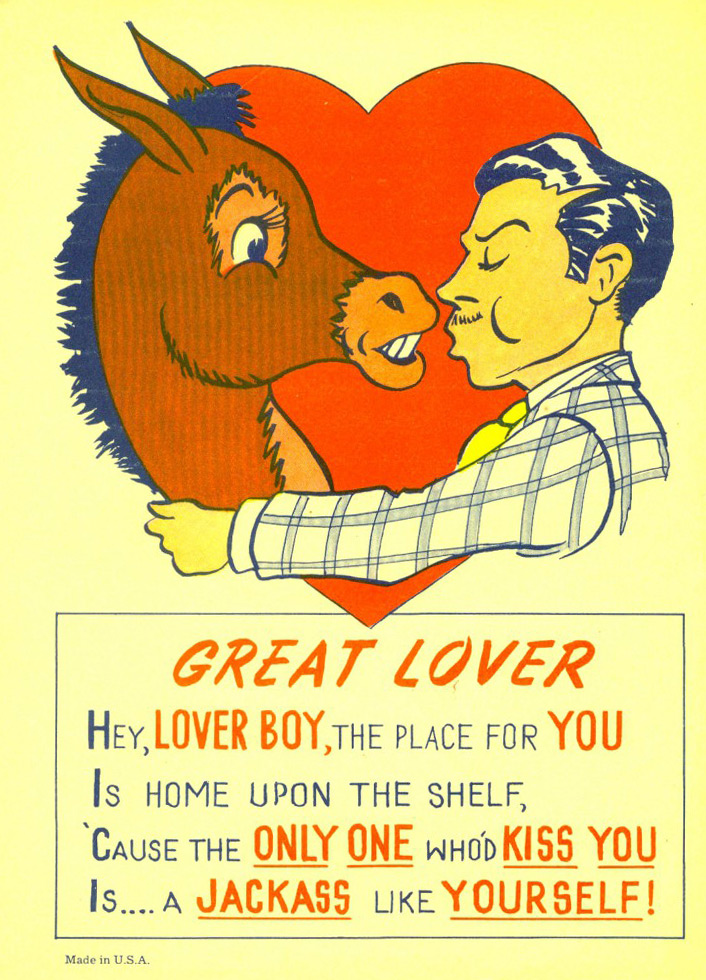The Valentine’s Cards You Don’t Want to Get
Today is February 14th — Valentine’s Day. If that’s caught you by surprise and now you’re in a panic to buy something for a certain someone, the good news is that you can probably find a greeting card at the last minute. According to CNN, approximately 150 million Valentine’s Day cards are exchanged each year so, odds are, you aren’t alone. There are lots of people dropping $4.95 to tell someone how they really feel about someone else — well, if they like them, at least.
But Valentine’s Day wasn’t always limited to sharing good feelings. Once upon a time, there was a competing tradition — one that wasn’t very kind.

Pictured above, via Collectors Weekly, is an example of one such greeting. It’s called a “vinegar valentine” because it isn’t very sweet, to say the least. It should be immediately apparent that if you sent that card to a potential love interest, he’d probably not react so kindly. The card above is dripping with sarcasm and malevolent mirth, not love and affection. It’s designed to tell a beau that his love is unrequited and will remain so; and why.
These vinegar valentines were common for about a century, from 1840 until about 1940 — and they were quite popular, too. Smithsonian states that “by the mid-19th century, vinegar valentines represented about half of all valentine sales in the U.S.” They were often made by the same companies that made the nice greeting cards and available for purchase at the same place you’d get your normal Valentine’s. In other words, the tradition of sending one was socially acceptable. Slate explains:
Vinegar valentines were a socially sanctioned chance to criticize, reject, and insult. They were often sent without a signature, enabling the sender to speak without fear. These cards were sent not just to significant others, friends, and family but to a larger social circle. People might post a vinegar card to a store clerk, a teacher, or a neighbor.
But at times, these mean missives went beyond playground-level insults. Atlas Obscura notes that, around the turn of the 19th century, vinegar valentines were used as a way to anonymously shame supporters of women’s suffrage, as seen below. The key takeaway was simple: if a woman wanted a vote, she wouldn’t be getting a real valentine.

It’s unclear why or exactly when the tradition of not-so-good-natured hate mail disappeared. We’re probably better off without them.
Bonus fact: On February 14, 1989, Iran’s Ayatollah Khomeini issued a fatwa against author Salman Rushdie, calling for the author’s death due to his perceived blasphemy. Rushdie has managed to avoid that fate thus far, but Iran doesn’t let him forget that he’s a marked man. The New York Times explains: “Rushdie says he receives a ‘sort of Valentine’s card’ from Iran each year on Feb. 14, letting him know the country has not forgotten the vow to end his life.”
From the Archives: Black Day: The anti-Valentine’s Day in Korea and Japan.
Not Related: Vintage vinegar valentines.
